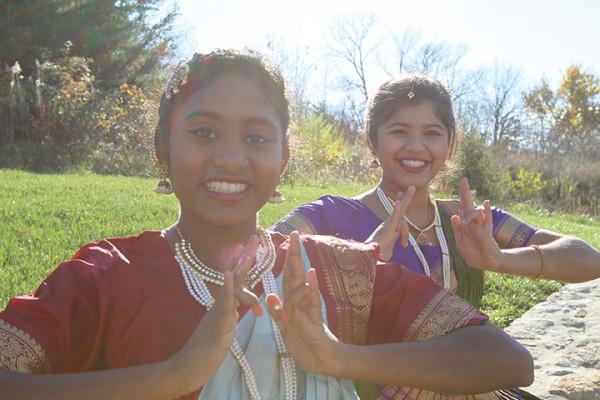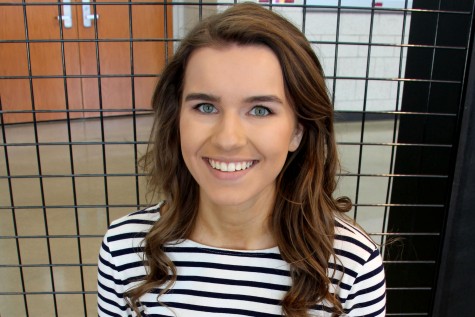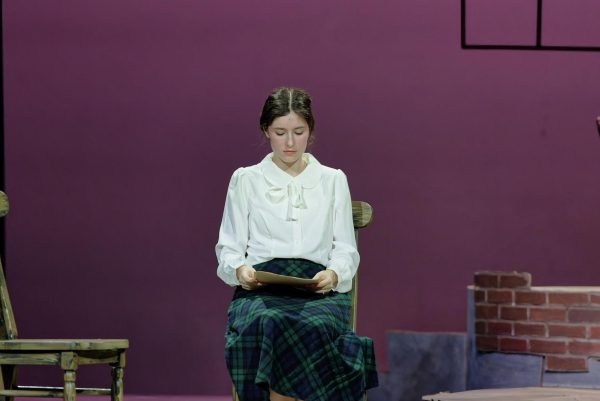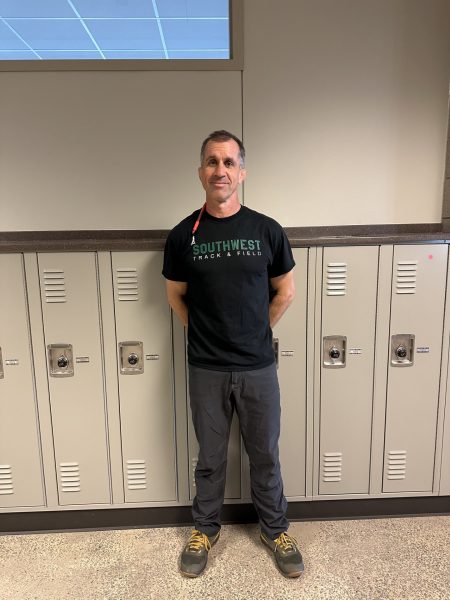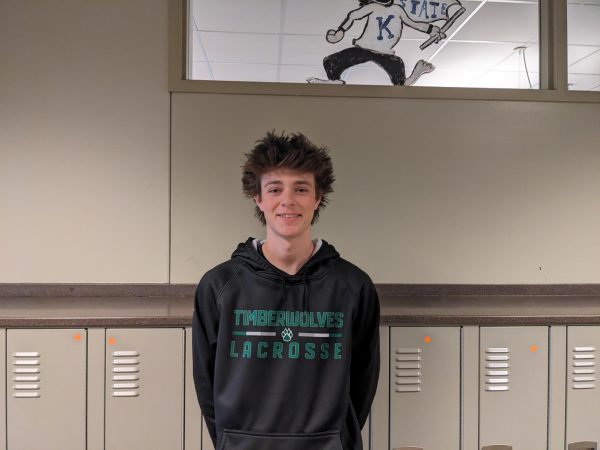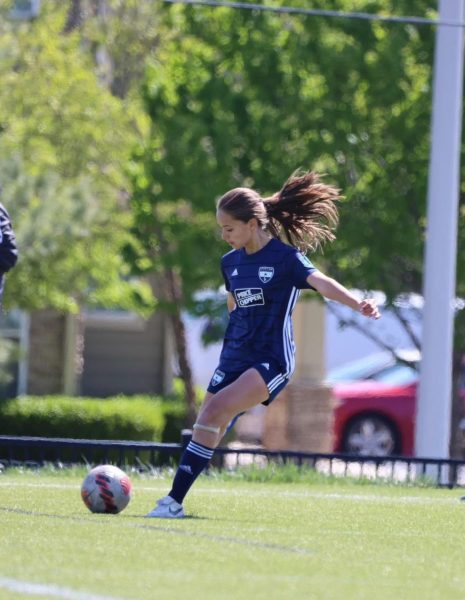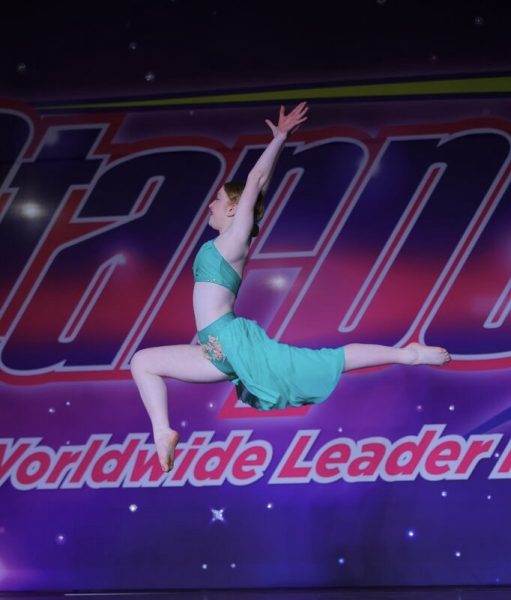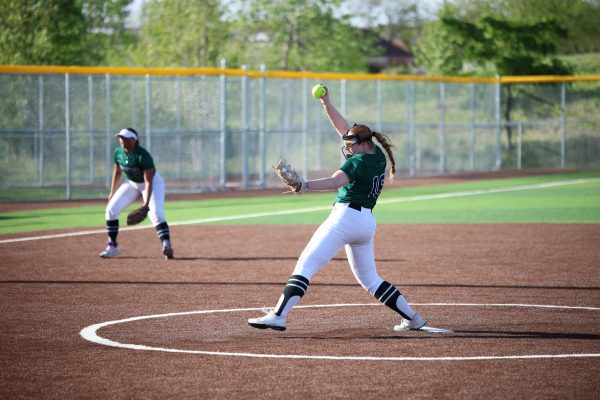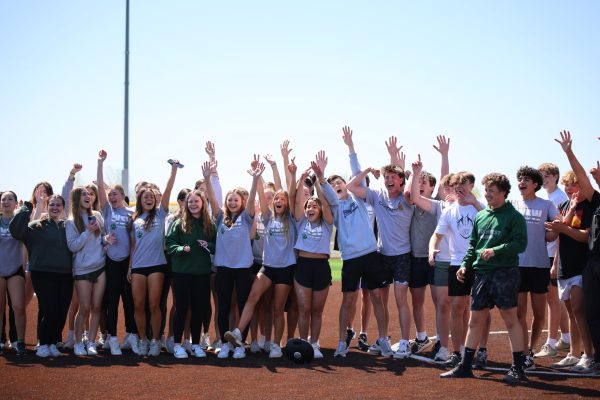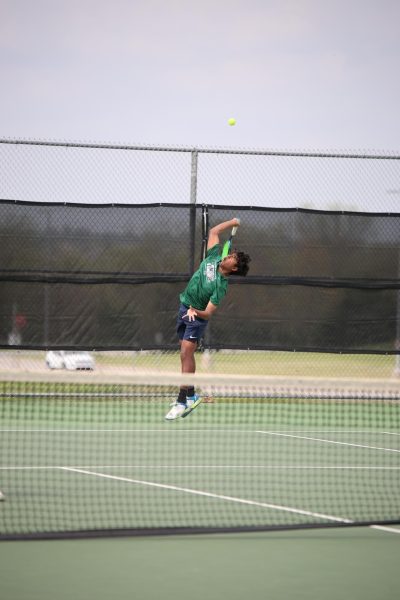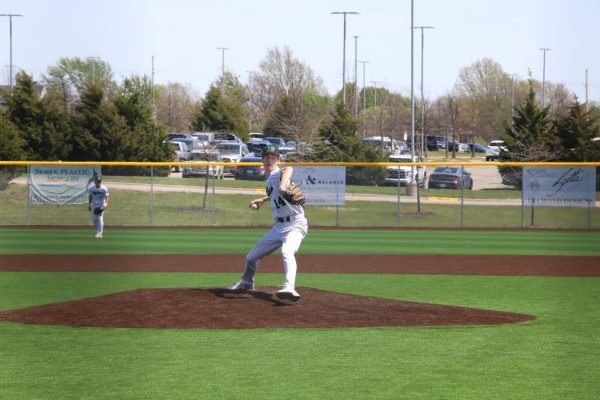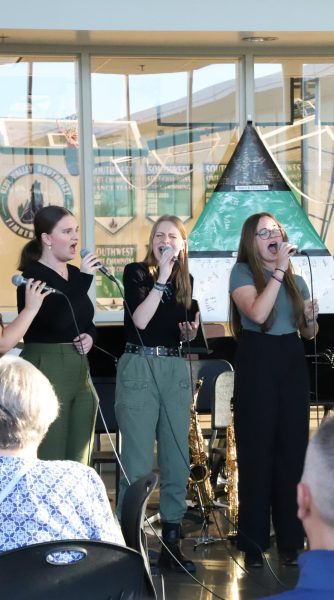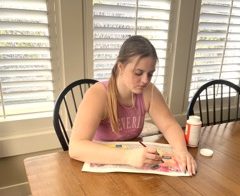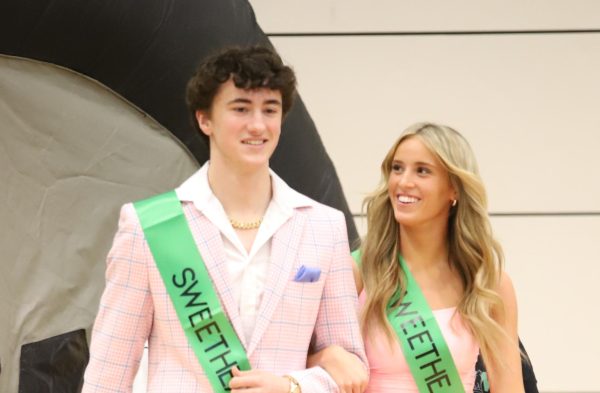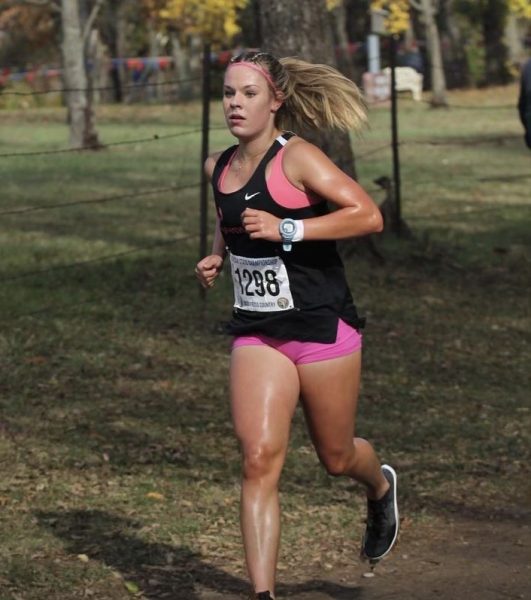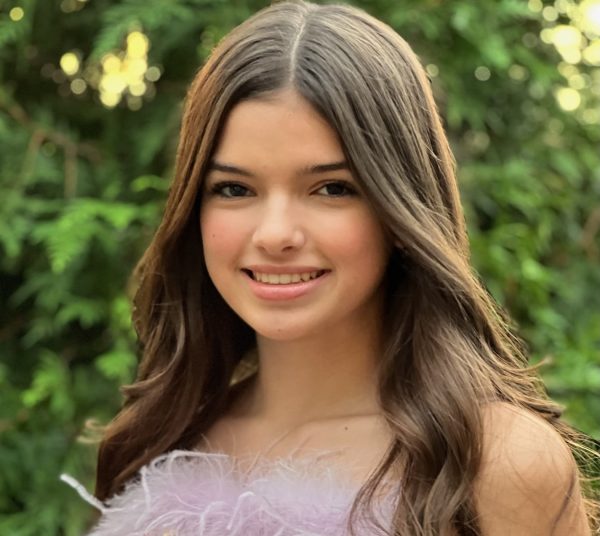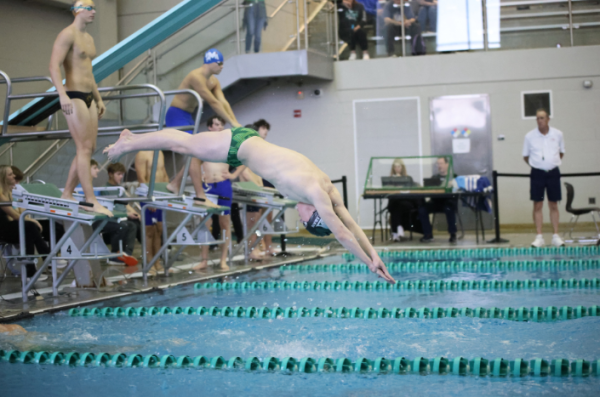Three sophomores perform Indian dance
Sneha Bhavanasi and Rathi Narayn use their fingers to make the three pathaka, which is a commonly used hand configuration in bharatanatyam. Dancers can also use their fingers to represent a variety of symbols such as a flower, arrow, trident, woman, goddess, or lovebirds. Dancers combine finger movements with different positions of the body and face to tell stories.
As her eyes fixate on the mirror straight ahead of her, sophomore Rathi Narayan examines her every step and movement with each beat of her instructor, Maithili Parikh’s, tap of the wooden tatta kali. Her knees bend, and her feet face outwards, forming a diamond shaped position, and her wrists gracefully flex as she moves her outstretched arms from side to side. Each piercing strike of her teacher’s wood block over the rhythmic hum of her Carnatic vocals signals a new stance for Narayan, as she moves her feet, arms and wrists accordingly with the beat.
Every Sunday morning, Narayan spends an hour and a half in the basement studio of Parikh’s home practicing bharatanatyam, one of the many forms of Indian classical dance. Narayan, along with sophomores Sneha Bhavanasi and Anjali Pradeep, has been doing bharatanatyam for close to a decade.
Bharatanatyam is characterized by the movements of the face, hands, wrists, arms and legs over the beat of classical Indian Carnatic music. Through each movement, the dancers tell stories of famous Indian gods, goddesses, princes, princesses, travelers and poets, among others. The dancers put all these components together and use the formations of their bodies to create symbols, thereby telling the life story of these influential figures in the Indian culture. Bharatanatyam is predominantly a style of dance popular in South India, where it originated in ancient times 3,000 years ago.
“It is actually really hard to keep track of [what you’re supposed to be doing with each part of your body],” Pradeep said. “But I feel like when I’m dancing a dance that I’m really into, I kind of go into a trance where I just go methodically into [the dance]. Otherwise I’m focused on so many things that I sometimes do forget, but when I forget I usually just smile it away.”
This year Bhavanasi, Narayan and Pradeep entered their tenth year of dance. After their parents signed them up for lessons in attempt to have their daughters learn more about the Indian culture, the girls have learned a multitude of different dances and movements. Pradeep is now even teaching younger students and choreographing dances.
“It is my role to teach [my students] about the Indian culture,” Parikh said. “At the same time, I try not to make it very strict for them. They need to keep that interest of coming to dance class every single time. They start here because their parents want them to. It is eventually their interest that keeps them going.”
For the three girls, that spark of interest has remained, and Bhavanasi attends biweekly dance classes, while Narayan and Pradeep go once a week for now, but plan on adding more sessions to their weekly schedules in the near future.
“I originally started because my mom wanted me to see the Indian culture, but then I grew to like [dance] a lot,” Bhavanasi said.
Outside of the dance studio, Bhavanasi, Narayan and Pradeep display their adept skills with the other students of their instructors in performances held multiple times throughout the year.
“It’s really fun to show what you’ve learned [in performances],” Narayan said. “A lot of people here don’t know about Indian dance. It’s cool when your friends come and watch. You get to show them about your culture, and what you know [regarding dance] and what you can do.”
In performances, the dancers, in Indian tradition, open with a dance about god and will then proceed to do a welcoming piece, in which each of the dancers introduce themselves. After the introductory dances conclude, the show continues with dances about legendary characters and figures in Indian culture. Each dance typically lasts five to ten minutes; however, the more arduous dances can last up to 20 minutes.
“[When I’m performing], I’m just trying to remember everything because there are a lot of little details,” Narayan said. “You have to do everything in a certain way, and there are so many things to remember, like what your feet should be doing, what your face should be doing and where you should keep your hands. You’re basically running through [in your head] what’s the next thing you have to do and trying not to mess up.”
With performances come the dutiful task of preparing both in technique and in appearance for the performance. Along with practicing both inside and outside dance class, dancers have to set aside an abundant amount of time prior to the performance to put on the proper attire, fasten jewelry and accessories, style hair and apply makeup, all of which can take hours to complete until the dancer is ready in her appearance to perform.
“The actual performance day is pretty hectic based on how long it takes us to get ready,” Pradeep said. “Usually for performances we only do one or two [dances], so basically we’re getting ready for two hours for maybe 20 minutes of performing time, but we’re totally okay with that because we love performing. The actual performance itself is we just go onstage, we dance and it’s over before we even know it.”
Out of the three girls, Pradeep is the only one who has completed her arangetram, which is a performance given in celebration of a student’s graduation from the basic skills and techniques of bharatanatyam.The performance is considered to be the student’s onstage debut as an advanced dancer. Pradeep completed her arangetram the summer before freshman year after having danced for nine years.
“[My arangetram] actually [took] a year and half long preparation,” Pradeep said. “During the school year [my instructor, Ritu Daga, and I] would meet two to three times a week and dance for maybe four hours. But during the summer in June and July, we would meet every single day and work from eight in the morning to four or five in the evening with an hour of lunch break. We would work and go through our entire repertoire of eight dances maybe two times each day.”
Bhavanasi and Narayan haven’t completed their arangetrams yet, but it’s something that Narayan has discussed with Parikh and Bhavanasi has discussed with her instructor, Anjali Tata. Narayan is planning on having her arangetram the summer before her senior year, and Bhavanasi will have her’s in the next few years also.
“It is a difficult thing these days to decide when [a student] is ready [for her arangetram],” Parikh said. “It takes them seven or eight years at least to get them ready, provided we work constantly at it. Some girls are fast learners, or they just spend more time practicing because they are more interested in putting more effort into it. We teach them the technique first, and that takes a number of years to get that, and then we start dances. We try to finish that repertoire with them and then decide if the child is ready for the arangetram.”
Classes, practicing and performances make bharatanatyam a time commitment that each of the girls have had to learn how to deal with when it comes to juggling schoolwork and other obligations.
“It’s pretty hard [to balance everything] because the school load is so much,” Bhavanasi said. “You have to find time to practice, and then you actually have to go to the lessons.”
Bharatanatyam has taught the girls life lessons, as well as exposing them to their culture, both of which are invaluable to Bhavanasi, Narayan, and Pradeep.
“My favorite part of dance is the entirety of it,” Pradeep said. “It’s just the feeling you get when you dance. It’s the feeling of showing other people your culture. It’s not about showing how of an amazing dancer you are. I like showing my culture. I like showing the stories that come from my past and my people.”
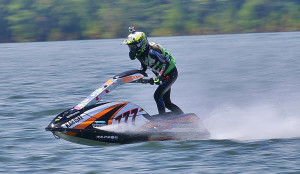
My name is Anna Glennon and I am one of the seniors that are on staff this year. This is my second year as a photo editor for the Standard.
I don’t...



